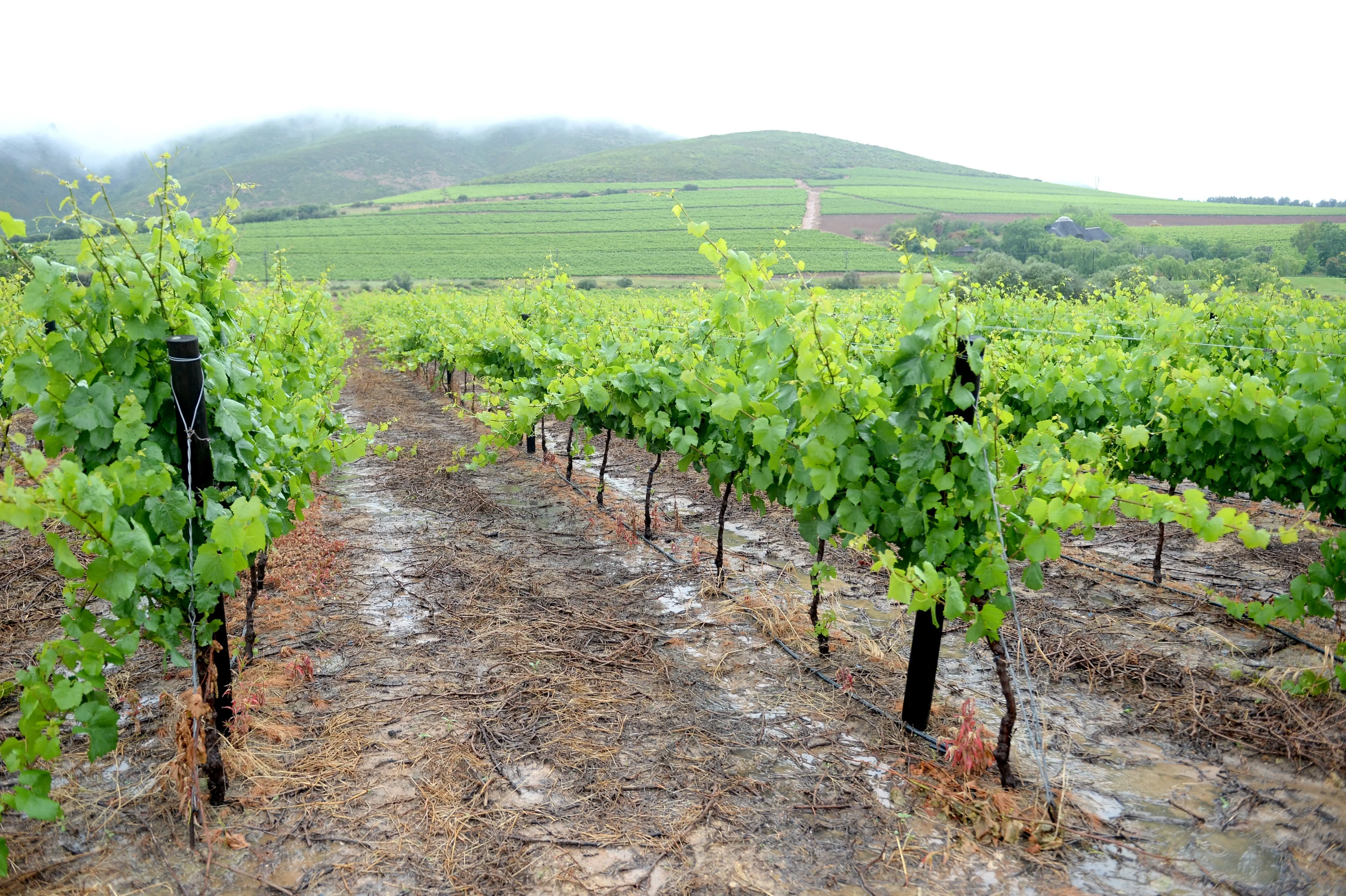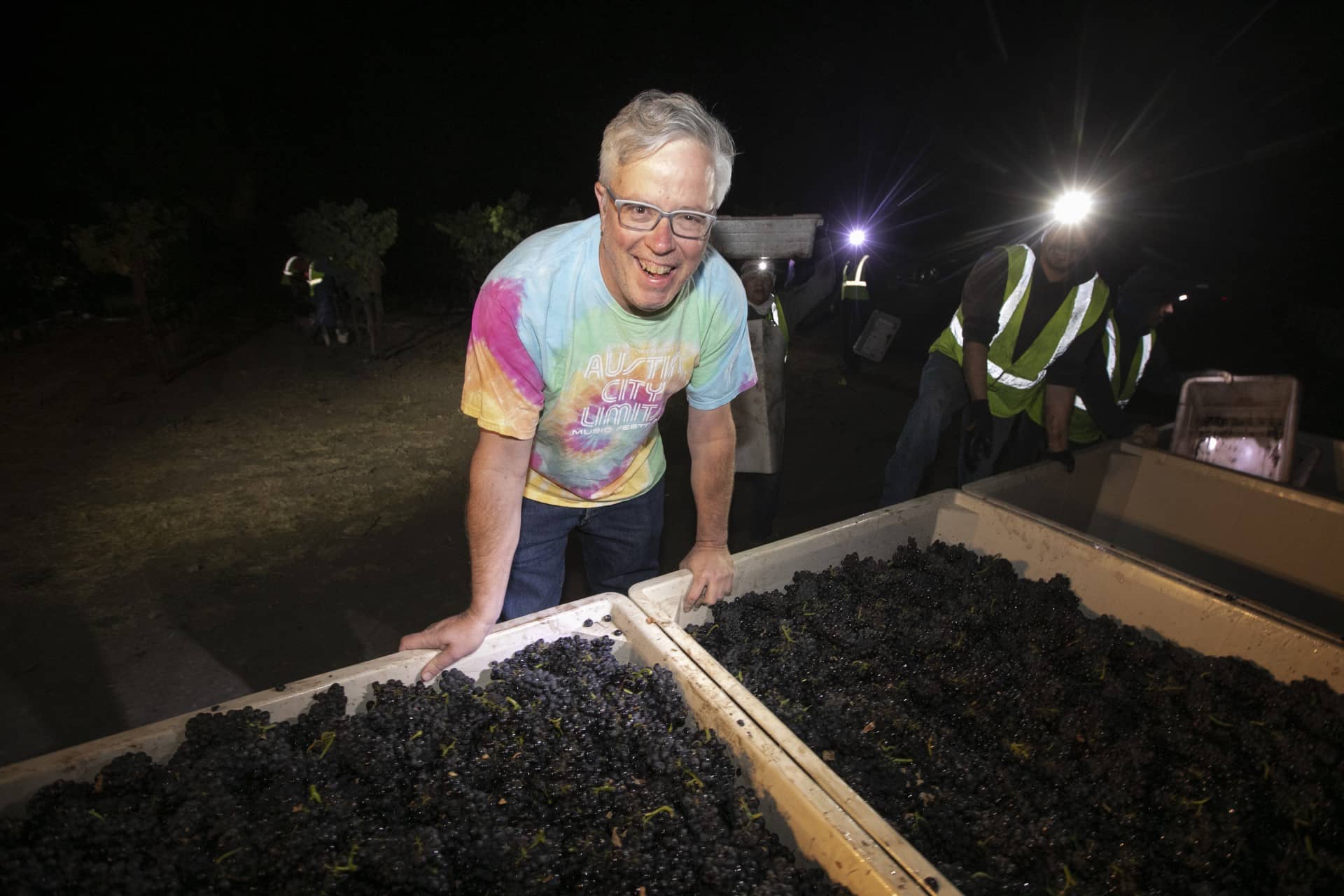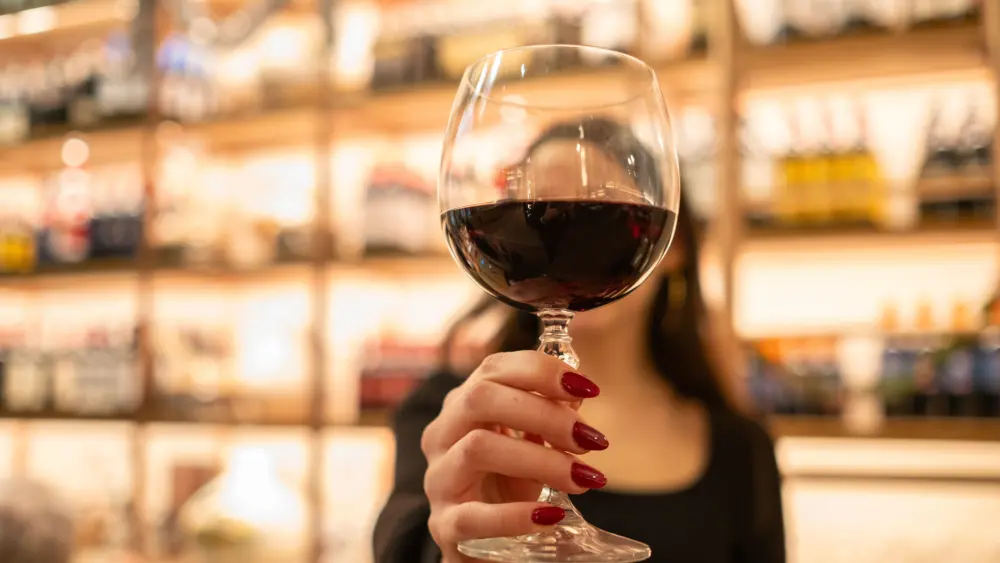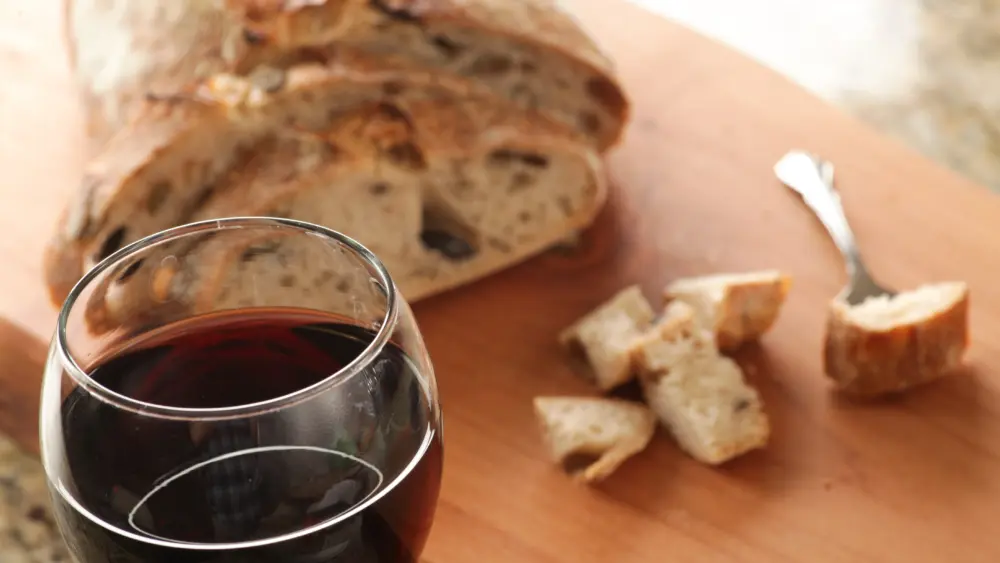
Rain at harvest is a pressing matter for vineyards.
I’m interrupting my regularly scheduled column to address a far more pressing matter: rain.
It’s been quite a while since we’ve seen rainfall during harvest here in California, but as I write this, it’s all anyone in the wine world is talking about. The current forecast calls for anywhere from three-quarters of an inch to 2 inches over the next week. Maybe it won’t materialize—but right now, every winemaker conversation begins with the weather. By the time this is published, we’ll know whether what’s now just a “damp harvest” (we’ve already had some showers) becomes a truly “wet harvest.”
Back in the day (I know, I sound like Dan Berger), rain at harvest felt like a constant and looming threat—the biggest one we faced. My first encounter with it came before I even made wine. I was working in wine retail in Texas and attending a Sept. 15, 1989, seminar for wine buyers hosted by a major Napa Valley winery. Just as things got underway, multiple pagers went off. Our hosts rushed to pay phones—yes, pay phones—to learn that heavy rain had begun falling back home. Two more storms followed, and 1989 turned into a soggy, problematic vintage. Years later, when I was offered that winery’s 1989s, I was assured all fruit had been picked before the rain. I knew that wasn’t true.
When I started making wine in 1994, rain was less of a concern—except in Oregon, where it was ever-present. My first three vintages there—1995, 1996, and 1997—were all negatively impacted by rain. Some would say Oregon hasn’t seen three such difficult harvests in a row since. Just my luck to start then.
From 1998 into the 2000s, California occasionally flirted with late-season rain. These events came late enough that they had only limited impact overall—but if you still had fruit hanging, you felt it. I recall one vintage when I asked a crew to pick on a cold, wet October Sunday. They all began coughing in unison, feigning illness. A case of beer and $200 in bonus money later, they were miraculously cured.
Then came 2011—California’s last truly wet harvest. Two major storms hit on back-to-back weekends, dumping nearly 7 inches of rain in some areas. Even if you wanted to pick after the first wave, muddy vineyards made it impossible to get equipment in. Winemakers had no choice but to wait. By that time, I’d become something of a veteran, thanks to my Oregon years, and my phone rang constantly with colleagues seeking advice on when to pick—or how to handle chaptalization (adding sugar to must), which is legal in Oregon but not in California. Napa and Sonoma grocery store shelves were stripped of sugar.
The irony of 2011 is that many of the wines turned out beautifully. Unlike 1989, we had better tools by then—improved forecasts, better vineyard gear and sophisticated ways of sorting fruit. Yes, the wines lacked the concentration of surrounding vintages, but many were elegant and persistent. We hadn’t “solved” the rain problem, but we’d gotten better at managing it, and that showed in the glass.
Over the past decade, rain has rarely been a serious harvest issue. Winemaking worries have shifted to heat, wildfires and smoke—far more frequent and damaging threats. Sadly, we’ve had enough practice with those, too, and are improving in our responses.
But with the 2025 vintage, it appears we may need to dust off that old rainy-day playbook and recall what worked in 2011.
And that, really, is the heart of this column. Challenging vintages are tough. They bring sleepless nights filled with decoding weather models. They push us into early picks and more intervention than we’d like in the cellar. But they also teach us. They sharpen our instincts. They make us better at what we do. And that’s far more valuable to our winemaking community than complacency.




